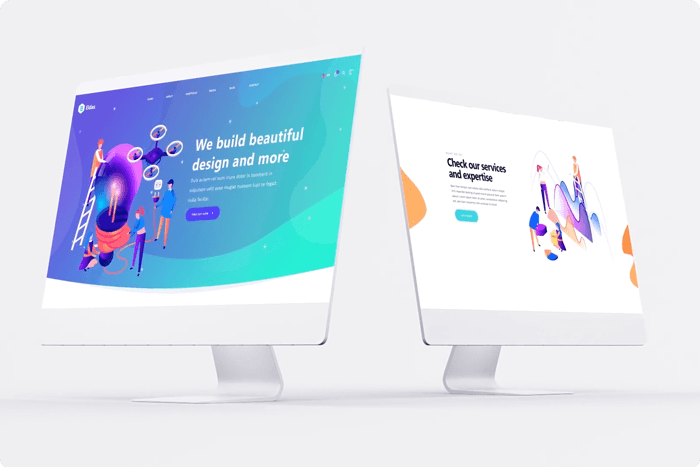GROWTH DRIVEN DESIGN

A website redesign is a tedious process. Unfortunately, it is also a procedure necessary for keeping a website relevant to users and search engines. Users’ needs and preferences are constantly in flux, as are that of search engine algorithms.
Depending on the industry you are in or the target audience you have, you may need to redesign as frequently as every few years. Consequently, web redesign is a time-consuming, expensive, and challenging endeavour.
What makes traditional website projects so hard?
Web design is more than just creating a beautiful or modern website. It is a thoroughgoing process that begins with planning and strategising. There are also competitors to consider, as well as the changing needs and preferences of your target audience.
The audience research aspects of web projects are tasks that can’t be done in just a day or two. Because traditional website projects involve limited funding and deadlines to beat, the research aspect tends to be done roughshod.
Of course, there won’t be any feedback or post-launch data incorporated into the initial design itself, which further reduces the overall effectiveness and responsiveness of the website and its features.
The many features that need to be incorporated into the website would require a lot of people. Moreover, these features have to be prioritised and streamlined to complement each other. The website and its features should also provide a seamless user experience despite its complexity. The different skill levels and work attitudes of the people involved in the web design team would affect overall performance.
What makes the growth-driven design different from traditional web design?
Tasks that are associated with traditional web design end once a website has been launched online. When the time comes for redesign, the web designing team will have to cram all their tasks in a short time. This wasteful, inefficient process repeats itself every time the website needs to be redesigned.
On the other hand, growth-driven design (GDD) operates on the premise of continuous improvement. This means that the web design team will not have to wait for the next redesign period to incorporate feedback and improvements. Once a website’s shortcomings are identified, they would be addressed, no matter how trivial these glitches are. The improvements accrue over time, resulting in a more responsive website that quickly adapts to changes in the needs and behaviour of users and search engines.
It might sound too good to be true, but you can see the proof in the details of how GDD works. As mentioned earlier, GDD does not have to wait for so long to implement improvements in the website’s design. GDD is deliberately phased into smaller-scale projects that incorporate improvements and implement changes as soon as a website needs them.
In contrast, web redesign in the traditional framework is treated as a large, rigid project that needs to be started on Date X and finished on Date Y. In a fast-paced world, it is indeed absurd to wait for months or years until Date X comes just to start enacting much-needed changes on a website.
Because of how GDD streamlines improvement and redesign tasks into manageable chunks, the process of redesigning becomes more cost-effective in the long run. Moreover, preparing the budget for smaller, near-term projects tends to be more predictable since the prices of supplies and services needed are already known and won’t change drastically. As such, GDD projects incur fewer overruns or allocation deficits, compared to long-term budgeting for traditional projects.
If you're looking to create a new website for your small business, get in touch with us today for a free consultation on how we can help!







DIGINEWS BLOG
YOUR DIGITAL PARTNER.
Join the Community of Thriving Small Businesses
We’ve helped countless small businesses amplify their online presence, drive more traffic, and boost sales. Ready to join them? Whether you're tech-savvy or tech-shy, we've got a solution that's just right for you.
Start Your Journey Today 🌟
Discover how Your Digital Agency can transform your business. Sign up for a free consultation or explore our platform with a free trial. Let’s make your business the next big thing!
BE SEEN.
BE HEARD.
BE LOVED.

Serving Locations
Australia
USA
Canada
Your Digital Agency 2006 - 2025
Registered Trademark (TM)
Celebrating 18+ Years of Digital Marketing Excellence.


















